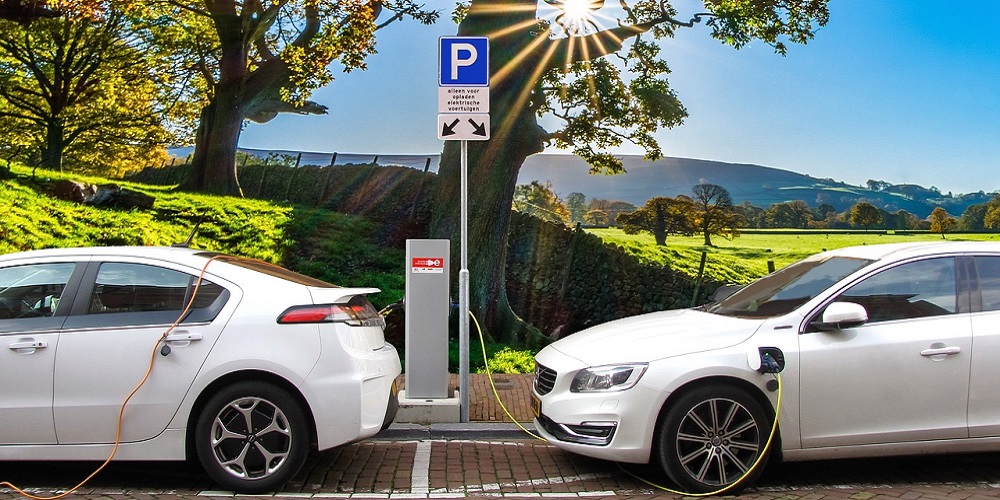Sustainable transportation for energy-efficient government fleet vehicles

Sustainable transportation is no longer a buzzword—it’s the future of government fleets. Thousands of U.S. cities are joining the movement and acquiring EVs to further the cause.
But while sustainability is vital for both people and the planet, reaching true sustainability (or net zero) will take decades. Government fleets need to understand the playing field and track the efforts of other organizations as they seek to follow the trend.
This guide explains how EVs are addressing a greener and more sustainable future for transportation. It also emphasizes the progress of government fleets toward the goal of net-zero emissions.
How sustainable transportation leads to energy-efficient government fleets
Before examining the role of sustainable transportation, we must define our terms. Sustainable transportation refers to affordable, zero-emission, energy-efficient vehicles supporting daily needs without straining budgets or drivers. Since they don’t rely heavily on traditional fuels, they release fewer emissions and pollutants into the atmosphere.
There are three ways that sustainable transportation creates energy-efficient government fleets.
1. Alternative fuels
EVs save up to 60% of fuel costs compared with traditional ICE vehicles. This makes the EV a sustainable option for public budgets and global fuel reserves.
2. Cost savings
EVs don’t require the same type of maintenance as traditional ICE vehicles. For example, the maintenance costs of EVs are up to $330 less per year than their ICE equivalents. For government fleets with several dozen vehicles, this can lead to considerable cost savings.
3. Telematics
EV telematics tracks emissions and vehicle metrics so you can make more data-driven decisions for your fleet. Using telematics correctly can reduce Scope 1 emissions by:
- Reducing fuel use
- Providing driver behavior training
- Streamlining the route planning process
Case studies of government fleets transitioning to sustainable transportation
Green transportation qualifies as “sustainable” in three ways: financially, environmentally, and integratively (specifically referring to infrastructure).
Here’s how three municipalities demonstrated the importance of these factors, including their decisions to get closer to the goal.
Charlotte, NC — Financially sustainable
The city of Charlotte is determined to achieve a carbon-neutral fleet by 2030. To do this, it partnered with the Electrification Coalition and the American Cities Climate Challenge City to fast-track its growth and garner stakeholder buy-in.
City leaders performed extensive research and found that switching five ICE vehicles to EV alternatives could lead to operational savings of $11,400 annually. By replacing a Chevy Impala with a Nissan LEAF, Charlotte could:
- Reduce greenhouse gases by 49%
- Cut the total cost of ownership by $12,000
The city remains on track for its 2030 goal and plans to purchase more EVs in the future.
Des Moines, IA — Environmentally sustainable
The city of Des Moines is headed for a 45% reduction in carbon emissions by 2030 or earlier. The broader goal is to get 100% carbon-free electricity by switching to wind energy by 2035.
To grow on this foundation of environmentally sustainable electricity, Des Moines used cooperative contracts to find EVs within its requirements. It reduced its interest rates by making two annual payments and took advantage of the $7,500 federal EV tax credit.
Today, Des Moines continues to serve its 700,000 residents with sustainable transportation powered by eco-friendly electricity.
Binghamton, NY — Integratively sustainable
The city of Binghamton is like many U.S. municipalities: it’s a small metro serving few people in a suburban setting. Mayor Richard David wanted to “walk the talk” of sustainable transportation by acquiring new EVs for the city’s public fleet.
But Binghamton’s existing infrastructure would require additional attention—another common obstacle faced by many U.S. fleets. Mayor David decided to work with the Collaborative, Climate Mayors, the Electrification Coalition, and Sourcewell to pressure-test ideas and proceed through the procurement process. Over time, Binghamton was able to:
- Convert 7,000 streetlights to LED bulbs to save power for EV charging
- Acquire a $250,000 grant to cover the costs of EVs
- Purchase two EVs through Sourcewell’s cooperative contracts, eliminating the need to develop, evaluate, or award bids
Binghamton continues to look to the future and explore new solutions for its sustainable transportation repertoire.
Leveraging Sourcewell’s cooperative contracts to empower your public fleet
No matter where you are in your sustainable transportation journey, you can rely on cooperative contracts to acquire the right solutions.
The benefits cannot be ignored:
- Working with Sourcewell in tandem with the Climate Mayors EV Purchasing Collaborative considerably shortens the EV procurement process.
- Multiple buying parties reduce the cost of goods via economy of scale.
- Competitively vetted contracts offer quality and compliance.
You can join more than 50,000 organizations at the state and local levels by leveraging the free resources provided by Sourcewell.
The electrification of fleet vehicles can save city leaders and public fleet professionals money and time—and accelerate the progress to net-zero emissions in government fleets. Is your public fleet ready to transition to electric vehicles? See how Sourcewell can be a trusted partner in your EV journey.


